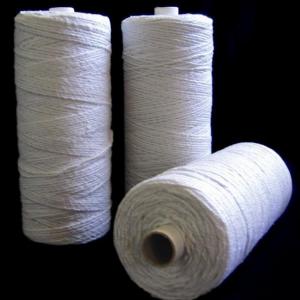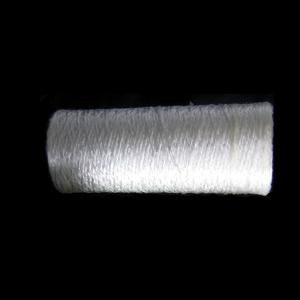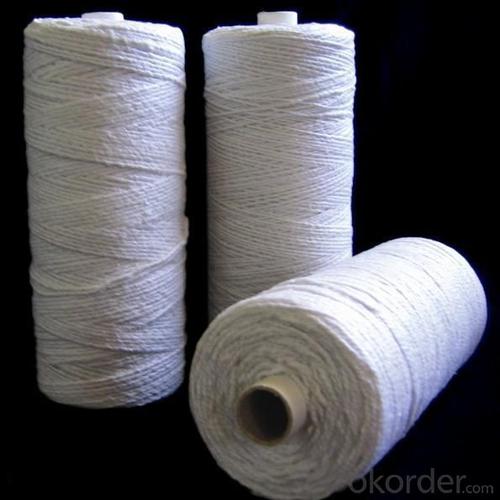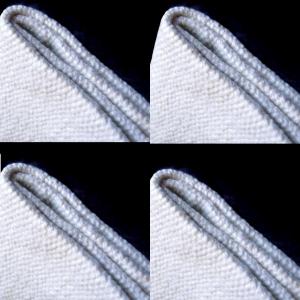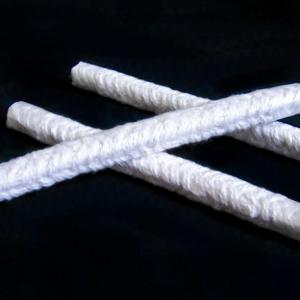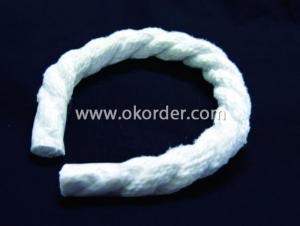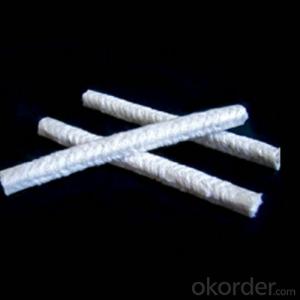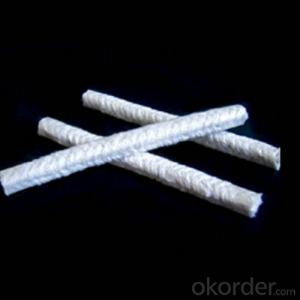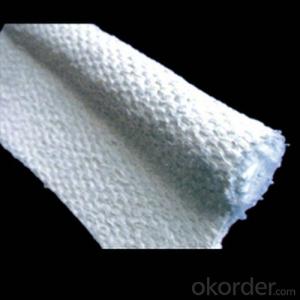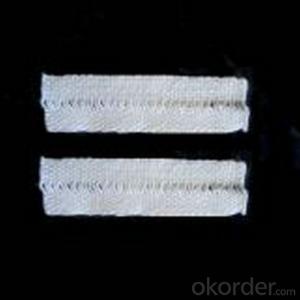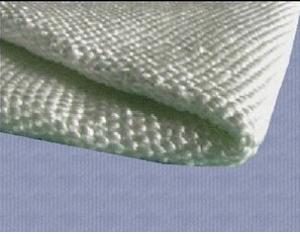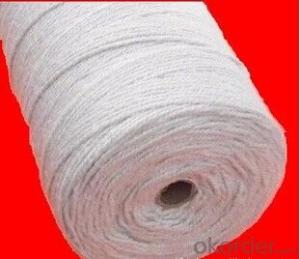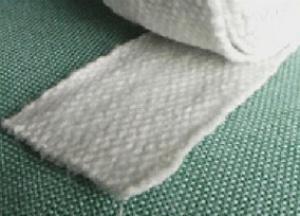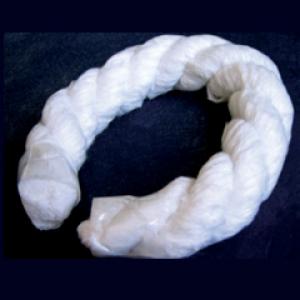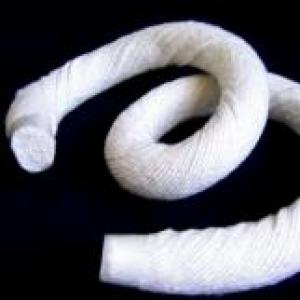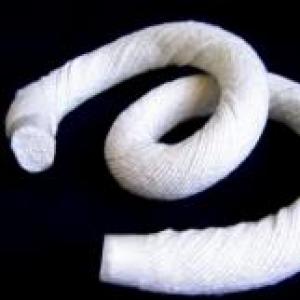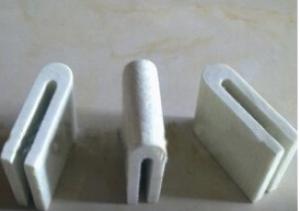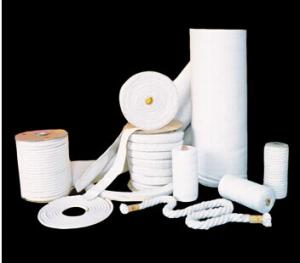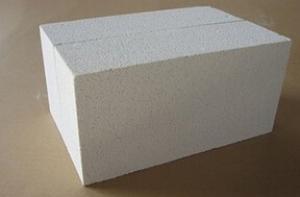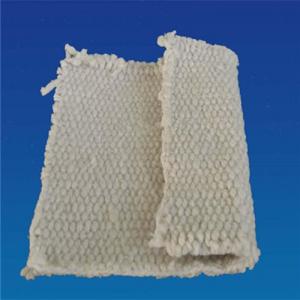Ceramic Fiber Textiles Yarn
- Loading Port:
- China Main Port
- Payment Terms:
- TT or L/C
- Min Order Qty:
- 20 Rolls kg
- Supply Capability:
- 10 Tons Per Month kg/month
OKorder Service Pledge
OKorder Financial Service
You Might Also Like
General Information of Ceramic Fiber Yarn
Ceramic fiber yarn is manufactured from high quality alumina-silica ceramic fiber and has been mechanically twisted to give it tensile strength. ceramic fiber yarn is available as E-glass or stainless steel #304 or #310 wire reinforced yarn from 425 tex to 2500 tex in single, two or three plies.
Ceramic fiber yarn can be woven, plaited into numerous forms of products which are strong, chemically stable and exhibit superior thermal properties, ideal for most industrial high temperature applications.
Product made of ceramic fiber yarn resist attack from most corrosive agents, except hydrofluoric, phosphoric acids and concentrated alkalis.
Feature of Ceramic Fiber Yarn
Low thermal conductivity
Low heat storage
Excellent chemical stability
Excellent thermal shock resistance
Excellent sound absorptio
Application of Ceramic Fiber Yarn
High Temperature gaskets
Production of cloth, tape
Sewing thread for high temperature textiles
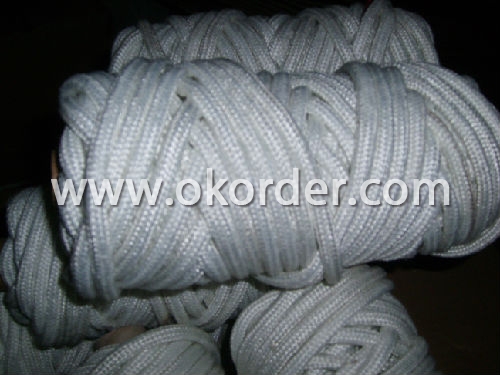
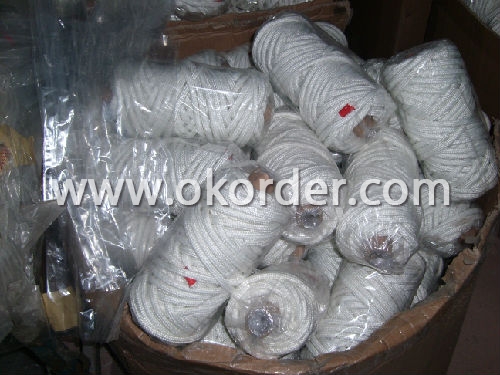
Technical Data of Ceramic Fiber Yarn
|
|
CERAMIC FIBER TEXTILES | |
|
|
Classification Temperature (℃) | 1260 |
|
|
Melting Point (℃) | 1760 |
|
|
Temperature Limit of Insert | Glass 650℃ |
Stainless Steel 1100℃ | |
|
|
Color | White |
|
|
Fiber Diameter (µm) | 3-4 |
|
|
Loss on Ignition (%) | 18 |
|
|
Thermal Conductivity(W/m.k) 1000℃ | <0.18 |
|
|
Linear Shrinkage 24hrs (%) 1100℃ | 3 |
|
|
Chemical Composition (%) |
|
|
|
Al2O3 | 47-49 |
|
|
Al2O3+ SiO2 | 99 |
|
|
Fe2O3 | 0.2 |
|
|
K2O+Na2O | 0.2 |
- Q: Is aluminum silicate fiber completely insulated from heat transfer?
- Fire-resistant insulation layer is used to make ceramic fiber module insulation, thermal insulation thickness of four hundred mm, the ceramic fiber blanket double extrusion, ceramic fiber module in parallel sorting, the trolley furnace wall temperature to plate temperature rise of forty-five degrees, which is almost a best isolation effect.
- Q: What is the function of (ceramic) ceramic powder?
- According to different porcelain stent materials are divided into: metal porcelain powder, pure titanium porcelain powder, casting porcelain powder, two alumina porcelain powder, zirconia porcelain powder, etc.. According to the temperature is divided into: high temperature porcelain powder, medium temperature porcelain powder, low temperature porcelain powder.
- Q: Is everybody's ceramic fiber cloth poisonous?
- Aluminum silicate fiber textiles can replace asbestos textiles, widely used in metallurgy, chemical industry, ceramics. Glass, refractories, shipbuilding, aerospace, automotive, machinery, electronics, building materials, light industry and other industrial sectors of the fire-resistant, heat insulation, fire prevention, friction, sealing, silencing, labor protection, high temperature filtering etc..
- Q: Can ceramic fibers be spun?
- The utility model can also achieve higher strength by increasing metal wire reinforcement, and finally can be made into products such as yarn, cloth, belt, rope, packing, etc., and the utility model has wide application.
- Q: What are the uses of ceramic fiber blankets?
- Ceramic fiber blanket is mainly used for high temperature, tough, self bearing high strength of the place, but also used for high airflow speed, mechanical destruction of large places. Ceramic fiber blanket can be used in these occasions.
- Q: What's the temperature of the high temperature ceramic fiber cloth and ceramic drill cloth?
- The ceramic fiber cloth is only one kind of one thousand degree temperature resistance. It is reinforced cloth for steel wire.
- Q: What are the differences between digital textile printing ink and printing ink?
- Under the new economic environment, the textile industry will enter a short process, digital production mode. Nowadays, more and more printing and dyeing mills use wide format inkjet printing to produce.
- Q: What are the man-made fibers polluting the environment?
- Fibers are roughly divided into natural fibers, man-made fibers, and synthetic fibers[natural fiber] refers to the natural growth or formation of fiber, including plant fiber (natural cellulose fiber), animal fibers (natural protein fiber) and mineral fiber. Plant fibers include: seed fiber, phloem fiber, leaf fiber, and fruit fiber. Seed fiber is the unicellular fiber that grows from the epidermal cells of some plant seeds. Such as cotton, kapok. Bast fiber is a single fiber or process fiber obtained from the phloem of some plants. Such as: linen, ramie, jute. Leaf fiber is the process fiber obtained from the leaves or sheaths of some plants. Such as: sisal, abaca. Fruit fiber is the fiber obtained from the fruit of some plants. Coconut fiber. An animal fiber (natural protein fiber) that includes hair, fiber, and gland fibers. Hair follicles: fibers of the hair follicles that have multicellular structures and are composed of keratin. Such as: wool, cashmere, camel hair, rabbit hair, Ma Haimao. Silk fibers: fibers formed from the glands of some insects, especially those produced by lepidopteran larvae, and fibers formed by secretions of some mollusks. Such as: silk.
- Q: The difference between ceramic fiber cloth and ceramic fiber paper
- Ceramic fiber paper and ceramic fiber cloth are refractory insulation materials, which can be used for insulation and heat preservation
- Q: Which is better, ceramic fiber or spray velvet?
- With the blowing of thrown silk cotton is two kinds of refractory ceramic fiber cotton cotton in the market at present, according to different production process is defined. Because of the different process, the characteristics of the two kinds of fire-resistant cotton are also different. According to different characteristics, they are applied in different heat insulation fields respectively. Ceramic fiber cotton, also known as aluminum silicate fiber cotton, its main purpose is to use other forms of refractory products, production and processing of raw materials.
1. Manufacturer Overview
| Location | Shandong, China |
| Year Established | 2002 |
| Annual Output Value | Below US$1 Million |
| Main Markets | Asia;America; Africa; Europe; and so on |
| Company Certifications | Quality management system certificate |
2. Manufacturer Certificates
| a) Certification Name | |
| Range | |
| Reference | |
| Validity Period |
3. Manufacturer Capability
| a) Trade Capacity | |
| Nearest Port | Qingdao |
| Export Percentage | 1% - 10% |
| No.of Employees in Trade Department | 21-50 pepole |
| Language Spoken: | English; Chinese |
| b) Factory Information | |
| Factory Size: | About 230,000 square meters |
| No. of Production Lines | 37 lines |
| Contract Manufacturing | Design Service Offered |
| Product Price Range | Average |
Send your message to us
Ceramic Fiber Textiles Yarn
- Loading Port:
- China Main Port
- Payment Terms:
- TT or L/C
- Min Order Qty:
- 20 Rolls kg
- Supply Capability:
- 10 Tons Per Month kg/month
OKorder Service Pledge
OKorder Financial Service
Similar products
Hot products
Hot Searches
Related keywords
